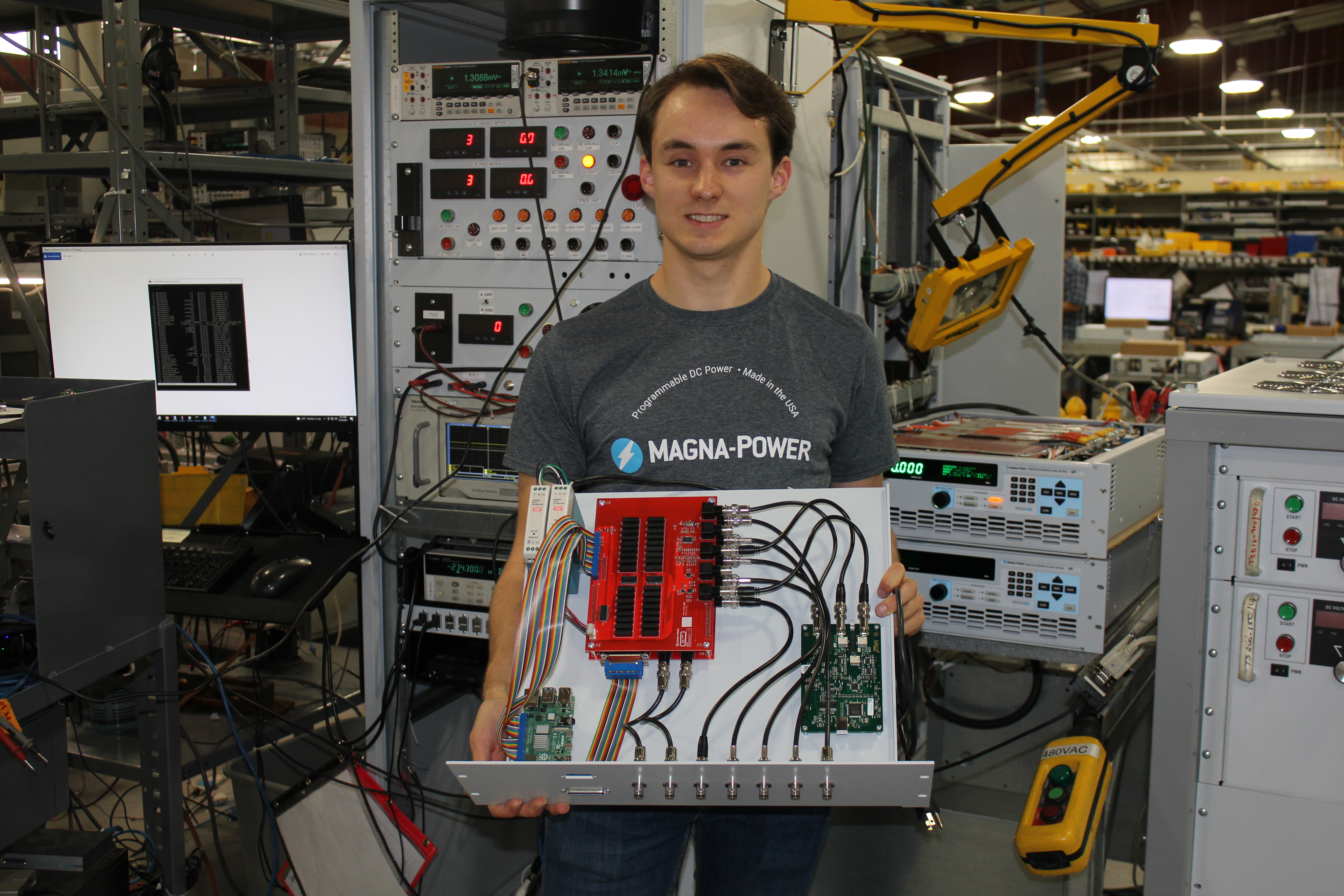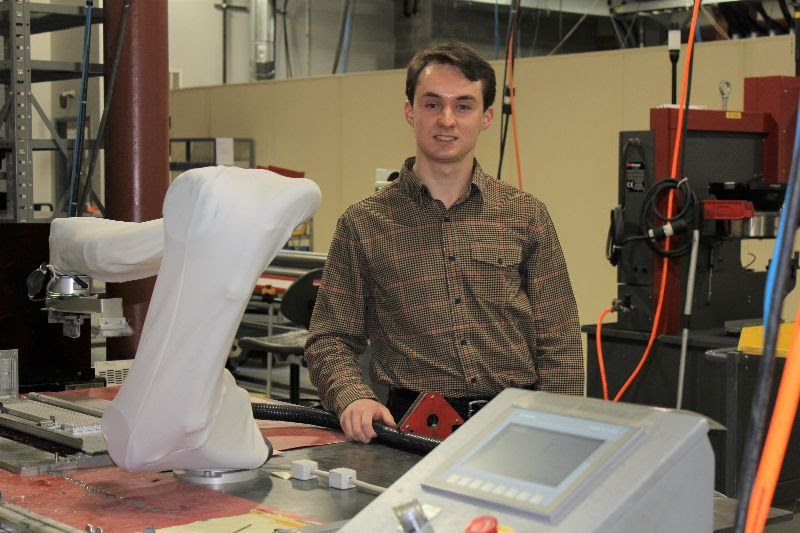Magna-Power Electronics, Inc
Summer 2022 - Electrical Engineering Internship
During the summer of 2022, I worked as an Electrical Engineering intern at Magna-Power Electronics. My summer project was to create a PLC controlled programmable load bank for testing power supplies up to 25kW which was built in a standard 19 inch wide rack. The system utilized a Siemens HMI touch panel which displayed a user interface that allowed technicians to select the desired resistance value for their test and enable the load. While under load, the HMI display reports back the measured voltage, current and power through the load bank, as well as temperatures of the internal water-cooled resistor modules.
Like previous projects, the load bank can be controlled over the network for test automation, which allowed Magna-Power’s internal testing software TestAndCal to remotely select resistor combinations, enable and disable the load bank, and read back voltage, current and power measurements.
A database was created so that load bank PLCs don’t have to be hard coded with resistor values, instead they are loaded over the network at startup based on the load bank ID stored in the PLC which is set through the HMI touch panel.
Summer 2021 - Electrical Engineering Internship
During the summer of 2021, I worked as an Electrical Engineering intern at Magna-Power Electronics. My summer project was to create a hardware and software platform to automate testing of Magna-Power's DC power supplies and electronic loads. The hardware and software needed to be compatible with their internal python testing software named TestAndCal that was already in use for some of the electronic load tests (some automated through SCPI, others were manual with instructions).
The goal of this project was to create a platform capable of automating all testing procedures for the electronic loads and upcoming power supplies. The main functions of the automated testing system (ATS) are to test the digital and analog IO on the power supplies, as well as connect various pieces of test equipment to the power supplies for more precise and high speed measurements.

Winter 2020-2021 - Electrical Engineering Internship
During winter break of 2021-2022, I was invited back to Magna-Power Electronics to work on a few small projects (since I was only there for three weeks).
Robot Arm Diagnostics display
The main project that I worked on during this short internship was adding a diagnostics display to the user interface for the robot arm that assembles heatsinks. The arm is a Universal Robotics UR5 collaborative robot arm and is controlled through a Siemens PLC and HMI. The arm had previously had a sensor cable fail which rendered it inoperable for a period of time.
The goal of this project was to create a diagnostics display for the robot arm that allows quick diagnosis of the arm when an issue is encountered. Automated tests are also run when this this display screen is up to detect if any sensors are reporting values that are unexpected. The addition of this display should allow quick diagnosis of future issues and help minimize downtime of the arm in the future should issues arise. Other small UI changes were made to add error indicators to the main display and add confirmations to certain buttons so that operators must verify their intention to preform certain actions such as shutting down the arm.

MIR Robot Scheduling
One of the side projects that I worked on during this internship was a script to interact with Magna-Power's MIR autonomous robot shelves that move materials and assemblies throughout the facility. The robots have a REST API that the script interacts with to interact with the robots at certain times of the day. The goal of this project was to ensure that the robots are not roaming around during the scheduled lunch times and break times. A few minutes before each of the breaks, the script is run using Windows Task Scheduler which sends the robots back to the stockroom to charge during break time. This keeps the robots out of the way when many employees are in the main walking paths throughout the facility as well as stopping the robots from trying to make deliveries when nobody will be able to unload materials from the robots. The script is also run at the end of the day to ensure that the robots make it back to the stockroom before closing to ensure that they can charge up overnight.
Since the production of the video below, the general operation of the robots has changed from a continuous loop around the facility to scheduled missions by departments around the facility. This optimizes delivery times as well as reducing unnecessary mileage on the robots.
Summer 2020 - Electrical Engineering Internship
During the summer of 2020, I worked as an Electrical Engineering Intern on finishing up a project from a past intern - the testing cell variac control panel. Magna-Power makes a vide variety of power supplies and as such, they need a wide variety of three phase AC input voltages to test them with. The Siemens PLC in the control panel connects to the three phase variac in the high power rack with multiple high power contactors and output options to optimize the voltage and current output capabilities of the variac. The PLC was programmed to allow testing department technicians to be able to control all of the functions of the variac cabinet from a single panel as well as monitor output voltages and currents from the outputs of the variac rack. The PLC also opened the door for future automation which was completed as a small part of my summer 2021 internship..
Pictures of the Testing cell racks can be seen in the background of my 2021 internship photo above. The panels below the Fluke multimeters and above the oscilloscope are the panels that I worked on, as well as the high power rack in the background.